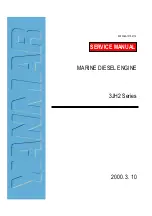
Technical specifications
INTORQ | BA 14.0196 | 04/2016
14
3.1.1
General information
The spring-applied brake is designed for converting mechanical work and kinetic energy into heat energy.
Due to the static braking torque, loads can be held at standstill. Emergency braking is possible at high speed
of rotation. The wear increases as the switching energy increases (operating speeds
The BFK455 spring-applied brake is a double-disk brake with four friction surfaces. The braking torque is
applied through two separate braking circuits, both electrical and mechanical, via several compression
springs (1.2) in the form of generated friction. The brake circuits are released electromagnetically. Due to its
division into two brake circuits, the brake is particularly suitable for applications such as lift systems and
stage/platform technology. The brake can be selected based on the rated torque for one brake circuit. The
second brake circuit meets the requirement for redundancy.
The division of the brake circuits is done using two separate armature disks (2) with their corresponding com-
pression springs (1.2) and electromagnetic coils (8). Each brake circuit can be operated individually due to
the separate supply lines for each stator and armature plate (
Each brake circuit has a micro-switch which monitors the switching state of the spring-applied brake. Using
the associated switching device, the supply voltage (AC voltage) is rectified and, when the brake is released,
lowered after a short period of time. This results in a reduction of the average electrical power of the brake.
The stator (1.1) is supplied in heat class F. The limit temperature of the coils (8) is 155 °C. The BFK455
spring-applied brake is designed for a maximum operating time of 60 % with holding current reduction.
Certificate
3.1.2
Brake
During the braking procedure, the pressure springs (1.2) use the armature plate (2) to press the rotor (3)
(which can be shifted axially on the hub (4)) against the friction surface. The asbestos-free friction linings
ensure high braking torque and low wear. The braking torque is transmitted between the hub (4) and the rotor
(3) via gear teeth.
Type
Characteristic torque
[Nm]
EC-type examination certificate
Directive 95/16/EC
UCM
Directive 2014/33 EU
BFK455-28
2 x 1200
ABV 881/2
ESV 881/2
EU-BD 881
2 x 1700, 2 x 1800
2 x 2065
















































